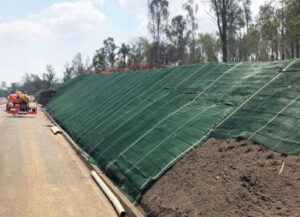Geosynthetics are a cost-effective and efficient solution for soil erosion control measures. Discover the benefits of using geosynthetics in this informative post.
Soil erosion can cause significant damage to the environment, infrastructure, and agriculture. Geosynthetics, which are synthetic materials used in civil engineering applications, have become a popular solution for soil erosion control measures.
In this post, we’ll explore the benefits of using geosynthetics and how they can help protect the environment and infrastructure while saving costs.
Advantages of Using Geosynthetics for Soil Erosion Control.
Geosynthetics offer several advantages for soil erosion control measures.
Firstly, they are cost-effective compared to traditional methods such as concrete or riprap.
Secondly, they are easy to install and require less maintenance.
Thirdly, they are flexible and can conform to the shape of the terrain, making them ideal for use in areas with irregular topography.
Finally, geosynthetics are environmentally friendly and can be recycled, reducing waste and promoting sustainability.
Geosynthetics are a popular choice for soil erosion control measures due to their numerous advantages. One of the biggest benefits is their cost-effectiveness.
Traditional methods such as concrete or riprap can be expensive, while geosynthetics are relatively inexpensive and can be installed quickly and easily. Additionally, geosynthetics require less maintenance than traditional methods, saving time and money in the long run.
Another advantage is their flexibility. Geosynthetics can be molded to fit the contours of the terrain, making them ideal for use in areas with irregular topography.
Finally, geosynthetics are environmentally friendly and can be recycled, reducing waste and promoting sustainability. Overall, geosynthetics are a smart choice for soil erosion control measures.




